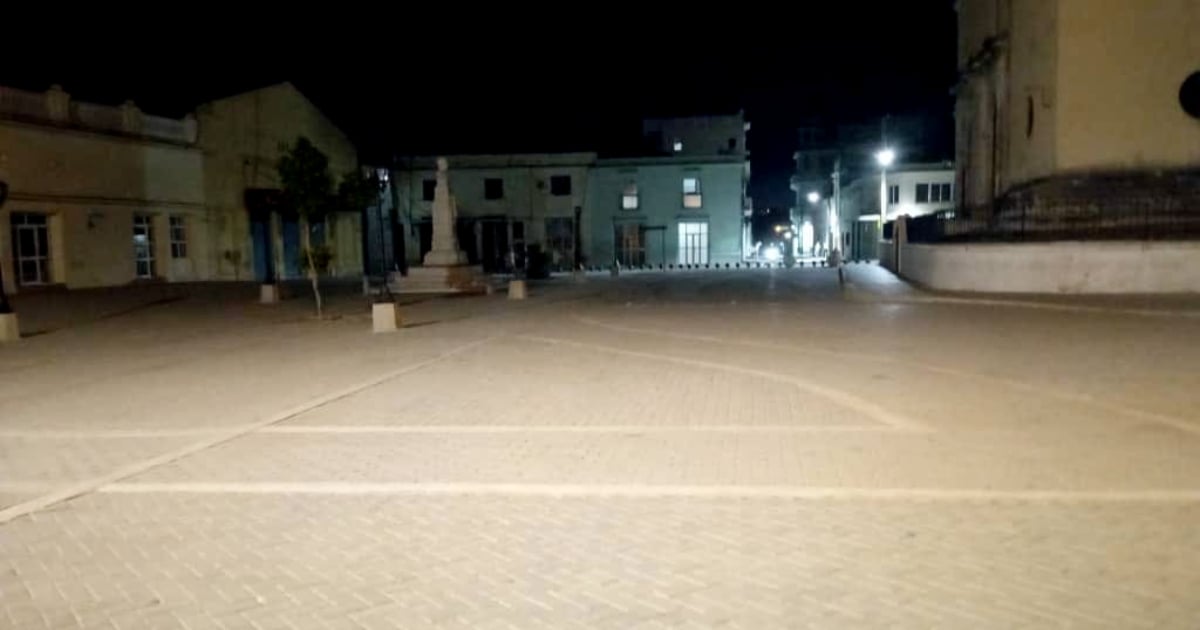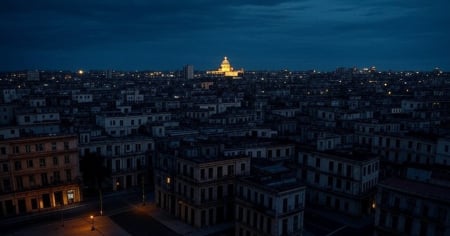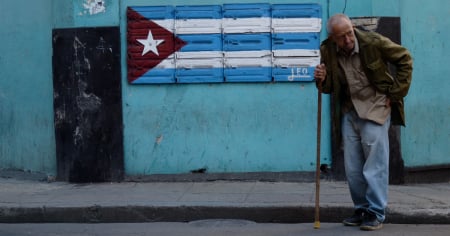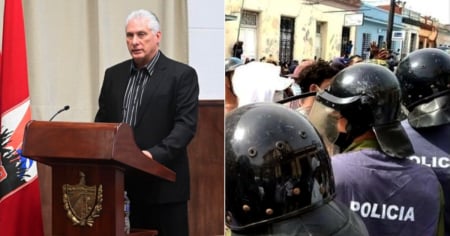
Related videos:
It's not new, but it indicates the state of tension within the power structures of the Cuban regime: government profiles on social media once again circulated images this Thursday showing the apparent calm in the streets of Cuba.
"It is a pleasure to stroll through the streets of Guanabacoa tonight and enjoy our Adolfo del Castillo Plaza and the surrounding streets in this #LaHabanaDeTodos. #UnidosXCuba #CubaEnPaz," said the Municipal Administrative Council of Guanabacoa on their social media.
The post shared photographs taken in public spaces of the town, where hardly any people can be seen in the streets, casually illuminated amid the frequent and prolonged blackouts affecting Cuba.
Following the protests that took place on March 17 (17M), where a crowd of Santiago residents filled the streets shouting "electricity and food!", the authorities of the province resorted to the same strategy.
Profiles of state-owned companies, leaders, pro-government journalists, and even professionals from other sectors formed a large "swarm of bees," as they refer to the trolls whose activities are triggered on social media by agents of State Security, in an effort to convey a sense of calm with photos of deserted streets in Santiago de Cuba.
In fact, from this province, Cuban activists reported on Wednesday a significant police presence due to fears of popular protests, with a notable deployment of trucks, patrols, and a large number of agents from the National Revolutionary Police (PNR) and special troops from the Ministry of the Interior (MININT), known as "black berets."
At the beginning of May 2023, the Cuban regime tried to create an appearance of "calm" following the protests that erupted in Caimanera, Guantánamo, which were violently suppressed by the Ministry of the Interior (MININT) forces.
State media, pro-government journalists, and defenders of the dictatorship shared images online of empty streets in Caimanera, attempting to downplay the protests.
In mid-July 2022, while Cubans from various provinces took to the streets to protest against frequent blackouts and food shortages, the Cuban regime and its supporters started posting images and messages on social media to portray a sense of calm prevailing in the country.
The profiles of citizens defending the dictatorship quickly posted photos of the empty and calm cities, after a crowd took to the streets of Los Palacios in Pinar del Río, banging pots and chanting phrases against the police and the ruler Miguel Díaz-Canel.
For its part, the Ministry of Communications shared several tweets urging citizens to "resist any aggression," following reports of internet outages in various provinces intended to prevent the dissemination of events.
This fact was confirmed by the data journalism site Inventario, which reported a decrease in connectivity within the Island in at least nine cities. This also aligns with the regime's strategy following the historic protests of July 11 in Cuba.
Filed under:





